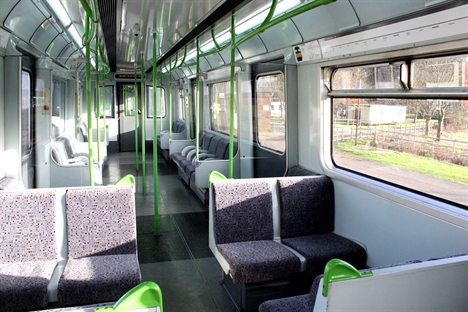22.11.16
In pursuit of the perfect train design
Source: RTM Oct/Nov 16
Adrian Shooter, chair of Vivarail and former chair of Chiltern Railways, discusses the impracticality of creating a train that suits everyone’s needs, and the design the company has adopted for the Class 230 on the Coventry to Nuneaton line.
Every rail passenger has an ideal layout in their mind that would suit them and their journey, and it’s a perpetual grievance that this train does not exist.
Of course, for practical reasons, this train cannot exist. For example, if you’re a daily commuter who works on the train: you want seats aplenty; if you’re a parent on a shopping trip: you want space for the buggy and bags; and if you use a wheelchair: you need a toilet that can accommodate you. And the list goes on.
So how can operators deal with this and provide a train that answers as many needs as possible within the cost constraints we all deal with?
Improving refurbishment
We know that refurbished trains can have an immediate impact on passenger satisfaction levels. Talented industry designers have spent years studying passenger needs and trying to accommodate as many as possible within their layouts.
One of the key considerations in our Class 230 build has been to enable that to happen. The beauty of the train is that once the existing seats are removed, a blank canvass exists to put in the most suitable arrangements. You may say that this is the case for every new train, and of course it is. But with the Class 230 the bodyshell already exists, so costs can be kept to a minimum. Working with the Creactive Design Ltd team, Vivarail has identified three key layouts that operators can ‘pick and mix’ for best effect.

Layout options
Our City train retains the existing layout, for the very simple reason that what’s the point of changing something that works? LUL has unparalleled experience in moving large quantities of people in as quick a time as possible (and, as an added bonus, they also designed extremely comfortable seats!). For swift transit, this train, with its grab poles and overhead hand grips, is ideal.
Longer journeys moving people from the outskirts into a city may best suit the Commuter layout. These trains carry fewer people but provide more seating and vestibule space for bikes.
And for rural or branch line services, the Country layout comes with tables, multi-purpose areas for buggies and bikes, plenty of wheelchair space – not to mention the picture windows to enjoy the view.
Neil Bates, Vivarail’s design director, said: “When we started on the Class 230 project we knew that we didn’t want to be prescriptive. My own rationale is to find out what passengers really want.
“For example, I’ve put seat bays in stations for people to rate for comfort – I’ve even filmed them to see how much they fidget and twist to get comfortable.
“I’ve frequently found that what people think is best is not actually the case. The Class 230 is a great example of that – when we first started out everyone was adamant that new seats were the way forward. Then when we reupholstered, the originals opinions changed and people began to comment how pleasant they were to sit on. So by covering with new moquette and adding in a head rest we have totally transformed the look without affecting the quality!”
Coventry to Nuneaton line
The Class 230 will be in service later this year on the Coventry to Nuneaton line. The two driving cars will retain the original seats and layout, but the middle car has been designed to showcase other possible designs.
I’m very much looking forward to hearing what people think. The train will be running for the next 12 months, so there will be plenty of time to really judge what suits best for different types of journey. This will give us great feedback to share with operators who want to choose the best for their own lines.
It may not be possible to design the ‘perfect’ train, but the Class 230 is going to come pretty close.
FOR MORE INFORMATION
W: www.vivarail.co.uk
© Alstom/Michael Wittwer